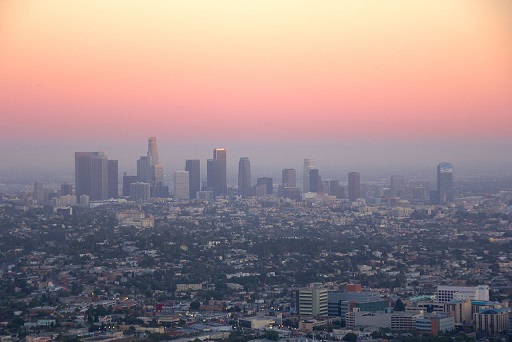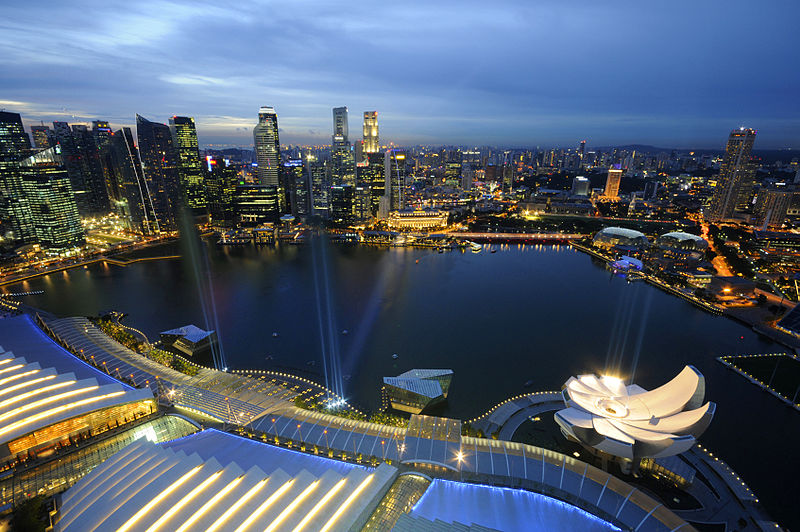Transforming our cities into the cities we need
Every day Marta Ramirez, a resident of Mexico City, rises at 4 a.m. and travels for two and a half hours – 50 kilometres – to work. More than five years of her life will be lost in transit, along with 40 per cent of her salary. The public transit Marta uses is dirty, dangerous and crowded. She arrives home too late and too tired to spend time with her family.

There are hundreds of millions of people like Marta in cities around the globe, in rich countries as well as poor. There will be billions more in the coming decades. By mid-century, under present trends, there will be 2.5 billion automobiles on the road, twice today’s number. Wealthier people in their cars will have more comfortable journeys to work and play, but they too are losing years of their lives and significant shares of their incomes through congestion.
This kind of urban existence is bad for the economy, bad for family life and terrible for the environment. It lowers economic productivity, offsetting the traditional gains from economies of agglomeration that urban life provides. Such sprawl in the United States, for example, has been estimated to cost the economy more than US$1 trillion per year. It is also increasingly deadly for residents of sprawling cities. Perhaps surprisingly, densely populated cities like New York have the fewest traffic fatalities, while far-flung ones like Atlanta have the most.
Is this the best we can do in the 21st century?
No, we can do much better – and a growing number of city leaders are starting to lead their cities onto a better path.
For much of the last hundred years, most cities have been built with the automobile at centre stage. Public funds have been devoted to roads rather than public transport. People have been expected to live in suburbs and planners have taken the easy route of accommodating growing populations by expanding into the far hinterlands and investing heavily in road infrastructure, with little thought about what is best for the overall health of the economy and society. This model has been followed in most of the rapidly growing cities of the emerging world. The result has been hundreds of millions of people like Marta.
The smarter path is to focus on people, and ask if there is a way to reduce travel time and pollution
The smarter path is to focus on people, and ask if there is a way to reduce travel time and pollution, while increasing competitiveness and safety and saving money. The answer is yes, there is such a way, but it requires clarity of vision, the willingness to adjust land use zoning and public spending choices, and political leadership to build ownership among citizens and overcome interests vested in the current model.
The vision will be different for different cities, but the principles are likely to be constant. Cities need to shift from a 20th century model of being distant, dispersed and disconnected, to a 21st century model of being compact, coordinated and connected.
Compact, coordinated and connected cities can generate stronger growth, create jobs, alleviate poverty and significantly reduce the cost of providing services and infrastructure. The Global Commission on the Economy and Climate (see http://newclimateeconomy.net) showed that such a shift will lead to better growth, as well as a much better social and physical environment. Worldwide, compact, coordinated and connected cities would save US$3 trillion in investment over the next 15 years.
Further, investing in building efficiency, public transport and better waste management worldwide could generate net savings of US$17 trillion by 2050 (http://2015.newclimateeconomy.report). With smart policy shifts, such as lower subsidies for fossil fuels and a price on carbon, the direct savings could be as much as US$22 trillion. At the same time, these actions could reduce greenhouse gas emissions by 3.7 gigatons of carbon dioxide equivalent per year by 2030.
The case is clearly compelling for new cities, but also for established cities that are expanding. Cities like Bangalore in India and Chongqing in China are examples of how this revolution in design is rewriting the urban rulebook. Even cities seemingly built on fossil fuels and the vehicles that use them are getting the message. Los Angeles (pictured left) and Houston have both changed course, and increased investment in public transit and smarter design as a practical response to metropolitan growth.
There’s every reason to take this course. So the question is, where do we start?
One place to begin is where Marta Ramirez’s commute does: on the street. The WRI Ross Center for Sustainable Cities (http://www.wri.org/wri-ross-center-sustainable-cities) has been showing how transit-oriented development can offer alternatives to using a personal car, including but not limited to improved public transport. Home offices, staggered work hours, reduced distance commuting and bicycle-friendly design are a few viable options that improve the quality of urban life.
The streets themselves can be made safer and more efficient, with such seemingly simple features as clearly marked bus lanes, sidewalks and directional signs and signals for traffic and pedestrians, with bus stops – not unmarked curbs – for riders and new rules to encourage adaptation to this different urban landscape. Bus rapid transit (BRT) systems can help even the most sprawling cities cut carbon emissions and save time and money.
Johannesburg’s BRT reaped $143m in direct economic returns in its first phase
Johannesburg’s BRT reaped US$143 million in direct economic returns in its first phase. Even in more challenging contexts, where innovative political engagement and financing are required, the benefits can be dramatic: a 20 per cent reduction in congestion in Lagos would inject US$1 billion into the economy every year.
The Global Protocol
Because cities cannot report what they do not measure, the Compact of Mayors commits cities to adopting a common accounting standard for measuring their emissions, the Global Protocol for Community-Scale Greenhouse Gas Emissions Inventories (GPC). To make sure this information is globally transparent, it will be compiled in a central repository.
Developed by WRI in collaboration with city networks C40 and ICLEI, the GPC helps cities account for all greenhouse gas emissions, including hard-to-track emissions that cross city boundaries. This allows cities to understand their main sources of greenhouse pollution and identify where these emissions can be reduced, comparing their results with those of other cities. More than 100 cities around the world – from China to Latin America – have used this protocol, and the number is growing rapidly.
Sustainable urban landscapes
One key to improving lives and the environment around cities is to create sustainable urban landscapes. Energy-efficient building standards can pay for themselves quickly and generate savings throughout a building’s lifespan. In Singapore (pictured right), for example, investments in efficient buildings through the ‘Green Mark’ programme pay for themselves in less than six years, with net economic savings of over US$400 million, while expanding green space, reducing heat island effects and capturing rainwater to lessen the demand for piped water.
What has all this got to do with climate change? Cities generate 70 per cent of greenhouse gas emissions, and will be hurt worst by the effects of climate change. This new urban paradigm demonstrates that far from costing more to grow in a low carbon manner, it will cost less – and promote a healthier urban economy. High carbon emissions – whether from long commutes and cars stuck for hours in traffic, or from buildings that leak energy through the lack of insulation – are an indication of economic inefficiency.
City leaders already recognise this new reality, and are taking advantage of its potential. The Compact of Mayors initiative announced in 2014 around the UN climate summit, is the world’s largest effort for cities to speed reduction of greenhouse gas emissions and prepare for the impacts of a changing climate. This essential agreement empowers cities – which account for 70 per cent of the world’s energy-related climate-warming emissions – to deepen their commitments to curb greenhouse gases and to report publicly on them, year by year.
While city governments and planners are leading the way in this urban revolution, they need partnerships to bring these transformational changes about on a global scale. In Paris at COP21, city mayors, central government ministers, multilateral agencies and corporate and CSO leaders will seek together to accelerate the momentum.
Transforming the cities we have into the cities we need can seem a daunting task, but cities are and have always been the centre of innovation and engines of economic growth and social change. It is in cities, by 2050, where 70 per cent of the population will live, 85 per cent of global GDP will be produced, and the battle against climate change will be lost or won. Fortunately, there is a clear strategy that can win the battle and bring huge economic and social benefits. The question is whether we will embrace it in time.








